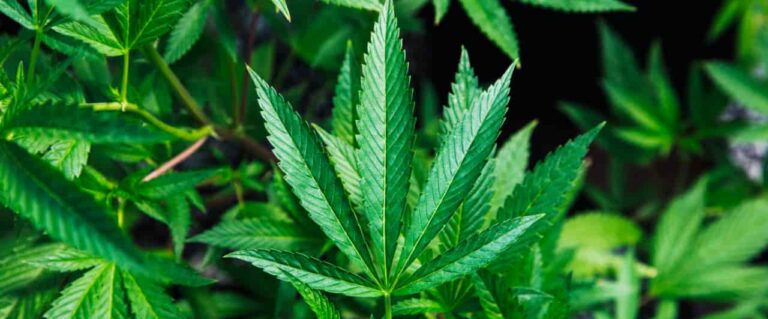Gluconolactone is a type of a polyhydroxy acid (PHA) that hydrates skin and acts as a very gentle exfoliant which turns it the best ally for those who want to achieve a flawless and smooth skin complexion.
What is gluconolactone
Gluconolactone is a polyhydroxy acid (PHA) derived from gluconic acid, polyhydroxy acids are a type of chemical exfoliants that tend to be gentler than BHA and AHA acids like salicylic acid or glycolic acid for example.
Unlike other types of acids, gluconolactone offers a very gentle skin exfoliation (it’s gentler because it’s a large molecule compared with other types of acids and it does not penetrate the skin deeper than other more powerful acids) at the same time it acts as a skin humectant.
At this point you may have noticed gluconolactone is not as powerful as other active ingredients, but it will be worthy to choose some products that includes it since it can be helpful if you want to achieve better results and to support your skin.
Gluconolactone is compatible with all skin types, even those with sensitive skin or rosacea can use it. Furthermore, it can be used together with tretinoin (without increasing irritation or affecting its efficacy) and after cosmetical procedures.
Gluconolactone benefits
It increases skin hydration and improves skin barrier
Several studies1Grimes PE, Green BA, Wildnauer RH, Edison BL. The use of polyhydroxy acids (PHAs) in photoaged skin. Cutis. 2004;73(2 Suppl):3–13. have concluded that gluconolactone and other PHAs offer moisturization and humectant skin properties supporting stratum corneum function. Furthermore they are safe to use on sensitive skin since they are gentle enough.
When it comes in preventing TransEpidermal Water Loss (skin losing moisture) and skin irritation after using sodium lauryl sulphate, gluconolactone is superior to several different acids2Berardesca E, Distante F, Vignoli GP, Oresajo C, Green B. Alpha hydroxyacids modulate stratum corneum barrier function. Br J Dermatol. 1997;137(6):934–938. including glycolic acid and lactic acid.
Unlike AHAs, PHAs like gluconolactone don’t tend to cause skin irritation and they can help skin barrier increasing its ability to support chemical challenge.
Gluconolactone reduces acne as much as benzoyl peroxide
A study compared the efficacy of a 14% gluconolactone solution vs placebo vs a 5% of benzoyl peroxide3Hunt MJ, Barnetson RS. A comparative study of gluconolactone versus benzoyl peroxide in the treatment of acne. Australas J Dermatol. 1992;33(3):131–134. doi:10.1111/j.1440-0960.1992.tb00100.x.
The study concluded that both gluconolactone and benzoyl peroxide reduces the number of inflammatory and non-inflammatory acne lesions with no significant differences between both compared to placebo.
The study also mentions that patients who used gluconolactone has less side effects than those who used benzoyl peroxide since gluconolactone it’s gentler and suitable for long a term use.
It offers a slightly sun protection and treats photoaging
Research concluded that gluconolactone provided up to 50% protection against UV radiation in vitro4Bernstein EF, Brown DB, Schwartz MD, Kaidbey K, Ksenzenko SM. The polyhydroxy acid gluconolactone protects against ultraviolet radiation in an in vitro model of cutaneous photoaging. Dermatol Surg. 2004;30(2 Pt 1):189–196. doi:10.1111/j.1524-4725.2004.30060.x. Furthermore, in a in vivo study it did’t significantly increase sunburn cells in skin.
A neostrata study found that both PHAs and AHAs could treat photodamage and improve skin aging with no significant differences (except in sallowness (AHA 17. 1% and PHA 12.4%) and elasticity in eye contour skin (AHA 13.5% and PHA 10.2% ) after 12 weeks of use)5Edison BL, Green BA, Wildnauer RH, Sigler ML. A polyhydroxy acid skin care regimen provides antiaging effects comparable to an alpha-hydroxyacid regimen. Cutis. 2004;73(2 Suppl):14–17..
Gluconolactone acts as an antioxidant
Like most PHAs, gluconolactone also offers antioxidant properties as it functions as a chelating agent so it shows potency in scavenging free radicals.
Gluconolactone has also shown to have anti-glycation effects. Glycation is a process that has shown to deteriorate some structural proteins such as collagen and elastin making it one of the main causes of skin aging.
Gluconolactone side effects
Even though gluconolactone is gentler than other actives, since it is a type of PHA it could have some side effects similar to AHAs and BHAs acids, which includes:
- Skin irritation and itchiness.
- Redness.
- Skin burn.
Although gluconolactone is safe for sensitive skin and it’s very unlikely to cause a side effect, you should always do a patch test before using it in an entire skin area in order to prevent a skin reaction or allergy.
